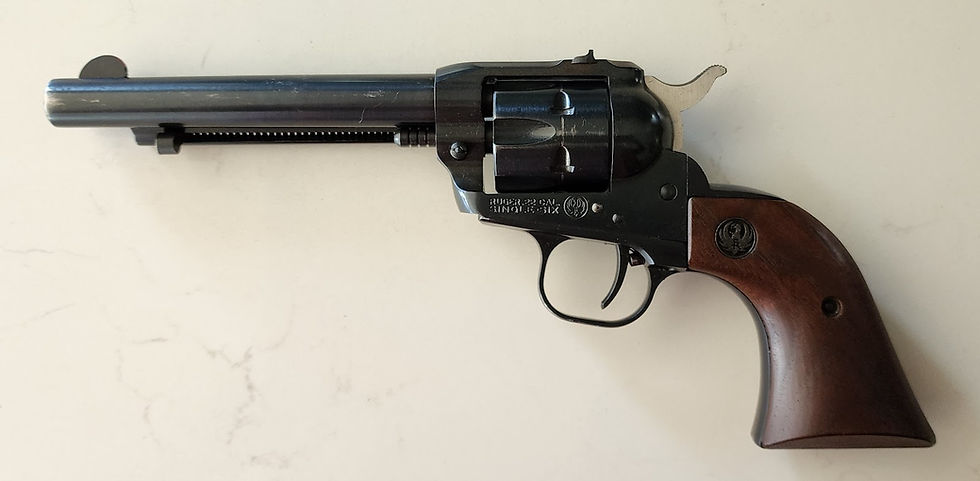The Colt Cobra
- Uncle Kenny

- Aug 13
- 3 min read
A Featherweight with a Heavy Memory
When I saw that bright little Colt Cobra in the University City collection, it was like getting yanked fifty years back in time. That particular revolver was the spitting image of the one my dad carried under his robe when he sat on the bench down in St. Francois County. Dad was a county judge, not a lawman, but he believed in being prepared. His Cobra rode in a worn leather ankle holster, snug against his right leg, hidden under his trousers. Quiet confidence in steel and wood.

A Revolver Built for Discretion
Colt brought out the Cobra in 1950, building on the already respected Detective Special frame. The Cobra’s claim to fame was its aluminum alloy frame, shaving several ounces off the Detective Special’s all-steel weight. That might not sound like much until you spend long days carrying it on your ankle or in a pocket. At just over fifteen ounces unloaded, the first-model Cobra was a .38 Special that disappeared on your person until you needed it.
The early Cobras had the same six-round cylinder as the Detective Special, and Colt kept the same profile that made the “D-frame” guns so comfortable in the hand. What changed was the frame material, the balance, and in those first models, a gorgeous blued finish with walnut grips that made it feel like a gentleman’s sidearm.
Detective Special vs. Cobra
The Detective Special and the Cobra share DNA. Both are six-shot, swing-out cylinder revolvers chambered in .38 Special. Both use the D-frame, meaning holsters, speed loaders, and grips often interchange. The key difference is weight and feel. The Detective Special is an all steel gun, tipping the scales closer to twenty four ounces, and it soaks up recoil better. The Cobra, thanks to its alloy frame, is much lighter, making it more suited for discreet, all day carry.
In Dad’s case, that meant the Cobra was perfect for courthouse duty. He could keep it hidden without dragging at his ankle all day, yet it still offered six rounds of .38 Special if trouble ever came through those courtroom doors.
The Day I Learned About Recoil and Regret
One summer afternoon, my buddy DeaDea and I were rummaging in Dad’s desk while he was “in chambers”, which meant he was probably sitting in the kitchen, smoking his cigarettes and reading case files. I slid open the bottom drawer and there it was, snug in its holster: the Colt Cobra.
We didn’t talk much; we just looked at each other, grinned, and slipped out the back door. Down at the St. Francois River, the afternoon sun bouncing off the water, we lined up a row of old soda bottles. The first shot startled me, that little revolver barked loud, the muzzle rise sharper than the .22s I was used to. DeaDea missed his first shot entirely, sending a splash into the shallows. We took turns until the bottles were gone and the cylinder was empty.

I wiped the gun down, reloaded it from the spare rounds in the holster, and slid it back into the desk just so. Thought I had it covered. That illusion lasted until supper. Dad put his fork down, looked me square in the eye, and asked how the St. Francois was running today. I froze. He had that slight tilt to his head, the one that meant he already knew the answer. Let’s just say I learned two lessons that day: the Cobra kicks a little more than you expect, and your father always knows when you’ve been into his things.
Final Word from Uncle Kenny
The Colt Cobra is more than just a lighter Detective Special. It’s a revolver with history, designed for professionals who needed discretion without sacrificing firepower. For me, it’s also a memory machine, one glimpse at a well kept first model and I’m right back on the banks of the St. Francois, hearing that sharp crack over the water. If you ever get a chance to handle one, do it. They’re a piece of American carry history, and in the right hands, they can tell one heck of a story.






Comments